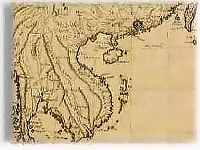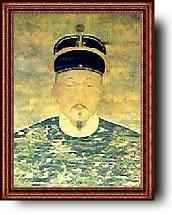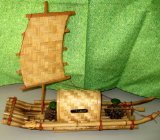More Pirate Pages
Pirate Fun
South China Pirates: South China Seas, Pirates in Taiwan- Pirates Hideouts
Pirates in the Far East

For the first 1000 years of piracy's existence in China, the choice of various Emperors for dealing with its seasons of strength was to send money for suppression to the leaders of the area that was affected. This usually produced the undesirable result of state funds essentially underwriting provincial corruption and theft on the seas.
 The large size of China, particularly the coastline, created an ironic scenario for piracy: a coastline too vast to easily control on the national scale led to regional control by pirate clans who grew so large as to be undermined by political entanglement.
The large size of China, particularly the coastline, created an ironic scenario for piracy: a coastline too vast to easily control on the national scale led to regional control by pirate clans who grew so large as to be undermined by political entanglement.
By the time that trade with Europeans began to increase in the early 1600's, the Ming dynasty had adopted an unusual policy of giving titles and salaries to pirates who were virtually thorns in their sides in hope that the added responsibility and air of legitimacy would create a force of pirates turned pirate-hunters.

 At this time there emerged Kuo Hsing Yeh (Koxinga), a son of one of these 'promoted pirates', who was fueled by the execution of his father and his own experience in his effort to drive the Manchu out of his homeland from his exile in Taiwan.
At this time there emerged Kuo Hsing Yeh (Koxinga), a son of one of these 'promoted pirates', who was fueled by the execution of his father and his own experience in his effort to drive the Manchu out of his homeland from his exile in Taiwan.
Kuo extended his activity beyond controlling the waters between Taiwan and China to preventing foreign trade from using the Yangtze River and even gaining a foothold in the capture of the port of Hsiamen around 1650.
His pirate dynasty survived losses sustained ten years later in a failed attempt to drive the Manchu forces from Nanking, and for almost 25 years beyond that, he commanded his fleet from Taiwan in a stranglehold on regional trade until his death in the early 1680's.
As the pirate son of a man promoted from pirate to Admiral in charge of pirate suppression, some would consider Kuo Hsing Yeh a bizarre emblem of Taiwan's ongoing struggle for independence from the mainland nation of China.
